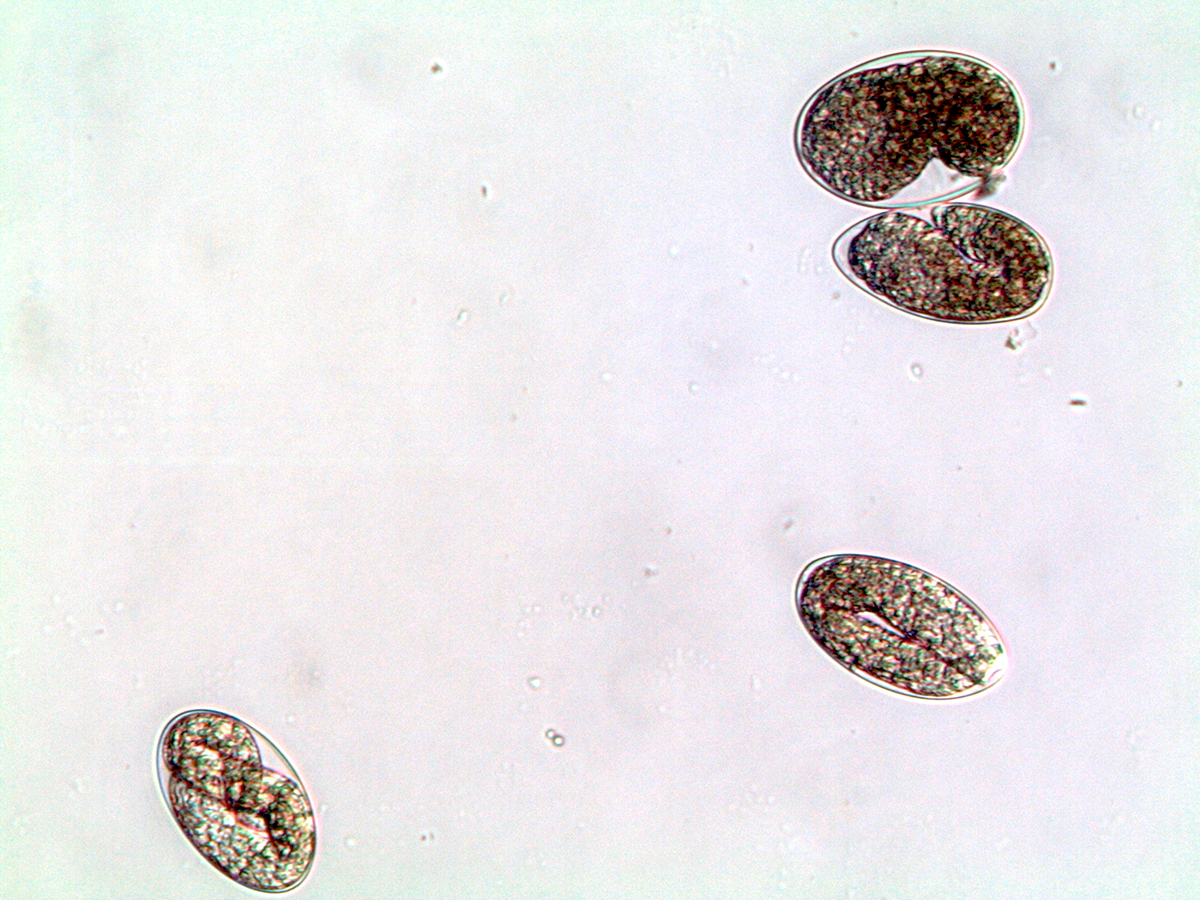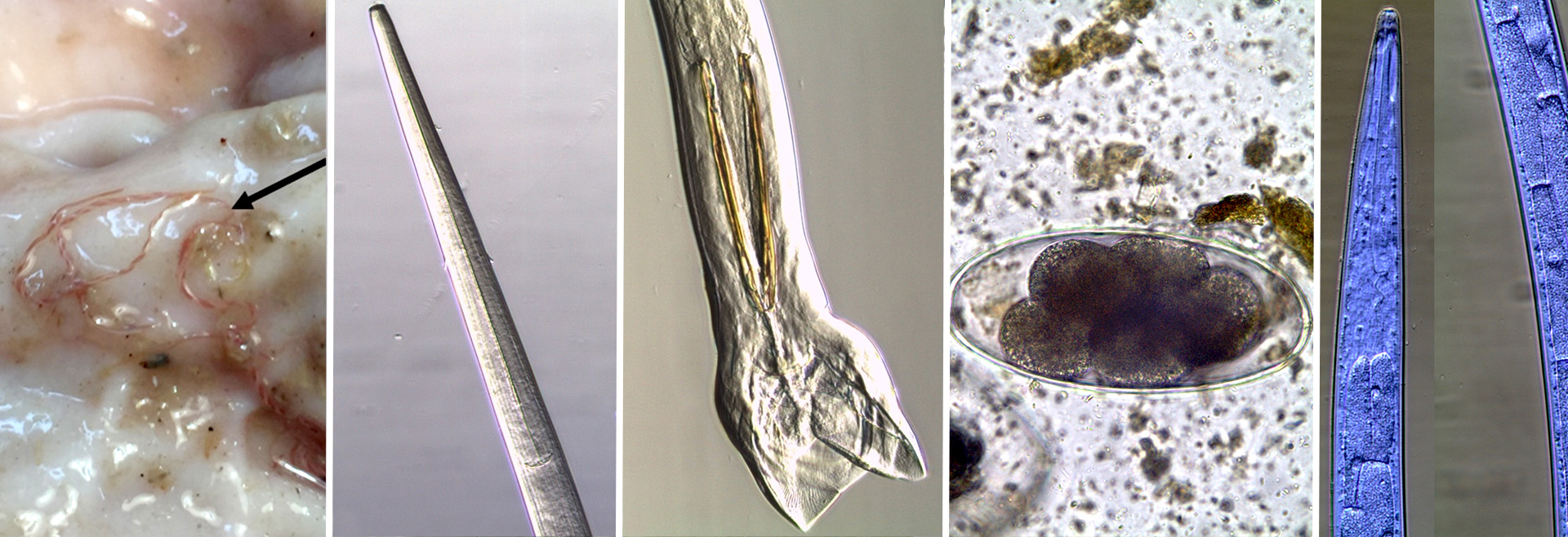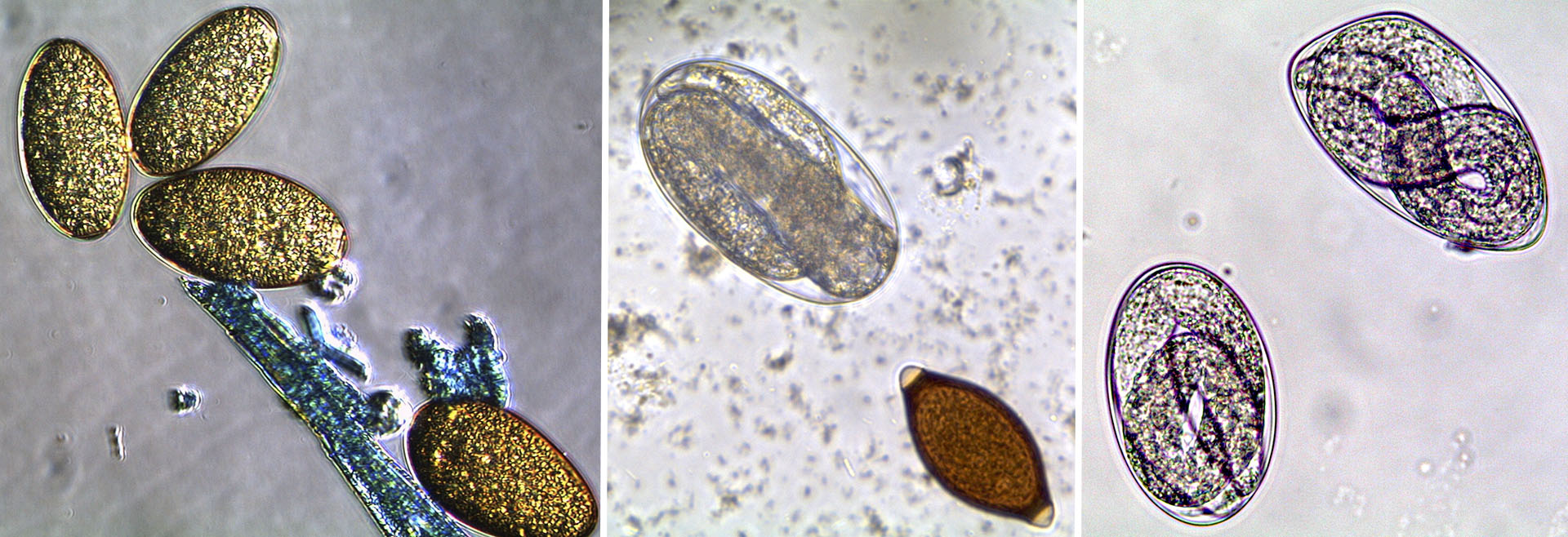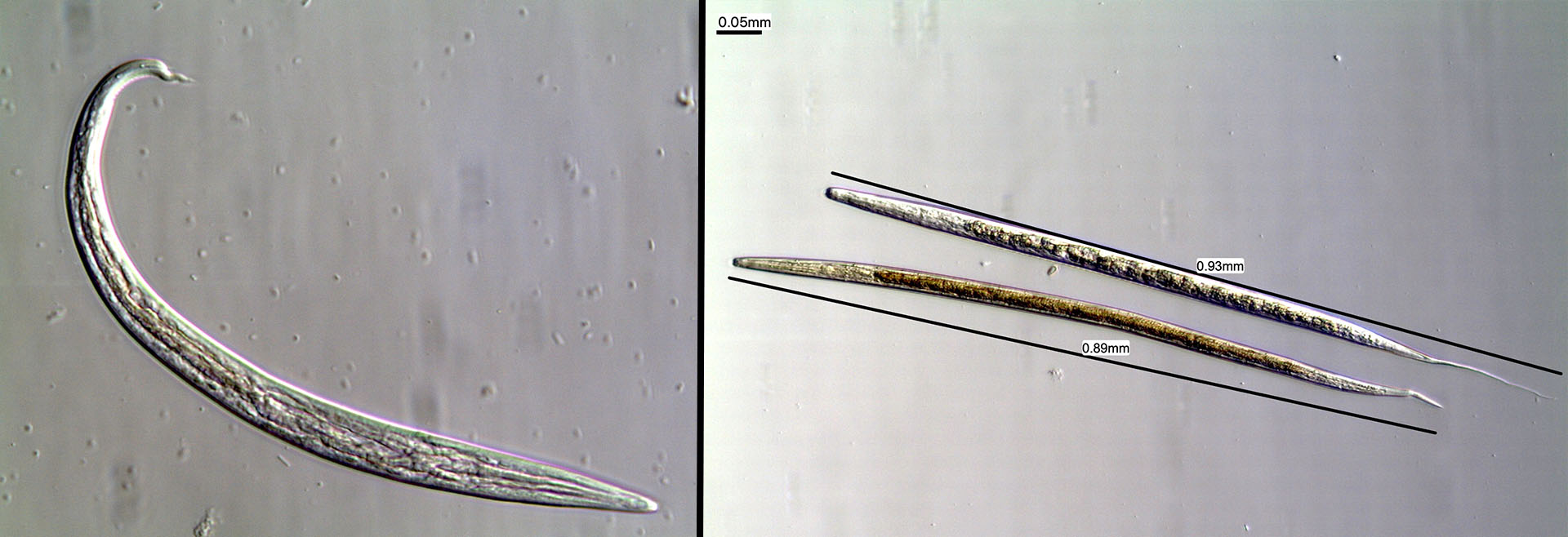
The term gastrointestinal strongylids, or GIS for short, encompasses gastrointestinal parasites of the order Strongylida, whose eggs are microscopically indistinguishable. The adult parasites live in the intestines of the hosts where they reproduce sexually. The eggs shed by the female parasites hatch outdoors and develop into infective L3 larvae in the faeces. These actively move to the surrounding pasture and are ingested by the animals, completing the cycle. The development and survival of the larvae on pasture depends on suitable temperature and humidity conditions, which may vary depending on the species.
The probability of a strongylid egg developing into a sexually mature adult is only one in thousands, but this is offset by the production of a huge number of eggs. Females of Haemonchus spp. are the most prolific, followed by Oesophagostomum spp., Chabertia spp., Bunostomum spp., Teladorsagia spp., Cooperia spp., Trichostrongylus spp., and Nematodirus spp.
The main clinical signs associated with these parasites include anorexia, persistent diarrhoea, and weight loss. Atrophy of the intestinal villi compromises digestion, resulting in malabsorption and loss of protein through the damaged mucosa. Host resistance is influenced by several factors, including age, general condition, genetics, the presence of concomitant infections, and the degree of acquired immunity to these parasites. Prophylaxis and control of these parasites should include a set of actions that combine strategic anthelmintic treatments with management practices that limit the risk of infection.
The blue bar represents the percentage of stool samples positive for the presence of eggs and the orange bar represents the percentage of negative samples.
The box-plot shows the results obtained in White Merino and Black Merino sheep. The horizontal line dividing the box indicates the median value of eggs per gram of faeces (OPG) observed, the lower line the minimum value, and the upper line the maximum value. Outliers are represented by a circle.


















